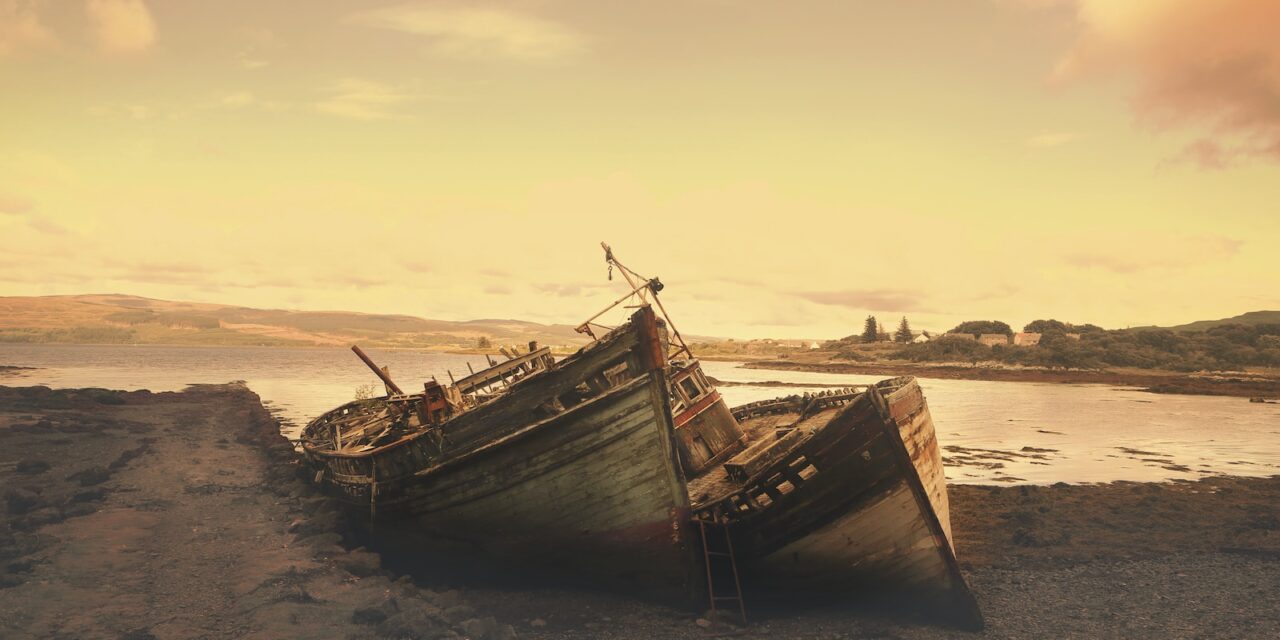Navigating Family Seas: Unveiling Maritime Lineages and Nautical Adventures
Maritime history is a vast and captivating realm that often goes unnoticed in the world of family genealogy. Yet, beneath the surface of this ocean of time lies a treasure trove of stories waiting to be discovered. Tracing your ancestors’ nautical adventures can be an illuminating journey, one that unveils the rich tapestry of their lives and the waters they sailed.
The Importance of Maritime History in Family Genealogy
When delving into your family’s past, it’s natural to focus on names, dates, and places. However, maritime history adds an entirely new dimension to your genealogical quest. Ships were not just vessels; they were chapters in your ancestors’ stories. Whether they were captains navigating the high seas, crew members weathering storms, or passengers seeking new horizons, each maritime role reveals a unique facet of their lives.
Maritime history isn’t just about the individuals who commanded or worked on ships; it’s also about the communities and cultures that revolved around maritime activities. Understanding the maritime context of your ancestors can help you appreciate the challenges they faced, the opportunities they pursued, and the legacies they left behind.
Tracing Nautical Connections: Shedding Light on Life Stories
Imagine the thrill of discovering that your great-great-grandfather was a seasoned sea captain who circumnavigated the globe in the 19th century. Or perhaps you uncover that your ancestors were immigrants who crossed oceans in search of a better life, enduring arduous journeys in cramped quarters. These revelations bring your ancestors to life, transforming them from mere names on a family tree into living, breathing individuals with unique experiences.
By exploring their nautical connections, you can answer questions about their motivations, aspirations, and the challenges they overcame. Did they trade exotic goods in distant ports? Did they survive a shipwreck or encounter pirates? The maritime lens provides a fresh perspective, allowing you to weave together a more comprehensive narrative of your family’s history.
Tips and Resources for Researching Maritime Ancestry
Embarking on a journey to uncover your maritime ancestry can be a thrilling adventure. To get started, consider the following tips and resources:
Ship Logs and Crew Records: Ship logs and crew records are invaluable sources of information. They often include details about voyages, crew members, and passengers. Many of these records are now digitized and accessible online, making it easier than ever to trace your ancestors’ maritime exploits.
Maritime Museums and Archives: Visit maritime museums and archives in your ancestral regions. These institutions often house extensive collections of maritime records, artifacts, and documents that can provide insights into your family’s seafaring past.
Local Historical Societies: Connect with local historical societies and genealogy groups in coastal regions. They may have specialized knowledge and resources related to maritime history and can offer guidance on where to start your research.
Online Genealogy Databases: Genealogy websites and databases like Ancestry.com, FamilySearch.org, and MyHeritage.com have extensive collections of maritime records. Utilize their search tools to uncover maritime documents related to your family.
DNA Testing: Consider DNA testing through services like 23andMe or AncestryDNA. DNA matches and ethnicity estimates can provide clues about your ancestors’ migration patterns and connections to specific regions with maritime histories.
As you navigate the family seas and explore your maritime lineages, remember that each discovery adds a new layer to your family’s story. Embrace the adventure, dive into the depths of maritime history, and let the tales of the sea guide you in unveiling the hidden treasures of your ancestral past.
Sailors’ Tales: Chronicles from the Open Waters
As we journey through the annals of our family history, there are few stories more captivating and evocative than those of our seafaring ancestors. The open waters, with their vastness and unpredictability, have always been a stage for both epic adventures and poignant struggles. Let’s embark on a voyage through time and share in the captivating sailors’ tales that illuminate the lives of those who braved the high seas.
The Adventures that Beckoned Across Horizons
Imagine your great-great-grandfather, standing on the deck of a majestic tall ship, gazing out at the endless expanse of the ocean. His heart surged with the anticipation of adventure, for he was about to embark on a voyage that would define his life. The tales of seafaring ancestors are a testament to their courage and the allure of the unknown.
Challenges and Triumphs on the High Seas
The life of a sailor was not one of comfort and ease. It was a life filled with trials, challenges, and, at times, sheer terror. Seafaring ancestors faced the wrath of storms that could capsize a ship, navigated treacherous waters fraught with hidden dangers, and endured the monotony of long voyages that tested their resolve.
Yet, it was in the face of these challenges that their resilience shone the brightest. These sailors, often far from home and family for extended periods, formed close-knit communities aboard their vessels. They learned to trust their shipmates with their lives and found camaraderie in the shared struggles of the open waters.
Personal Accounts: Voices from the Past
To truly grasp the essence of these seafaring adventures, one need only turn to the personal accounts and diaries of these intrepid sailors. These handwritten narratives offer an intimate glimpse into the trials and tribulations, as well as the moments of triumph and joy that colored their lives.
Consider the words of your ancestor, written by flickering candlelight in the cramped quarters of a ship’s cabin. Their entries may describe the thrill of sighting land after a long and perilous journey, the camaraderie shared during rough weather, or the homesickness that crept in during quiet nights at sea. These diaries are time capsules, preserving the voices and emotions of those who dared to sail into the unknown.
In your genealogical research, seek out these personal accounts and diaries. They provide not only valuable historical insights but also a profound connection to your seafaring ancestors. In these pages, you may find the untold stories that breathe life into your family’s maritime history.
As you delve into the sailors’ tales of your ancestors, you’ll discover a world filled with courage, resilience, and the relentless pursuit of adventure. These stories remind us of the indomitable human spirit and the enduring legacy of those who dared to navigate the open waters, leaving behind a legacy that continues to inspire us today.
Voyage of Discoveries: Exploring Ancestral Migration
The journey of our ancestors often transcended the borders of countries and continents, leading them to distant shores and new horizons. In the annals of maritime history, we find the hidden clues to their migrations, unveiling the stories of why they set sail and what they encountered on their journeys. Let’s delve into the profound impact of maritime history on tracing ancestral migrations.
Unraveling Migration Patterns through Maritime History
Maritime history serves as a map that guides us through the intricate paths our ancestors traversed. Ships, as the primary mode of long-distance travel for centuries, carried our forebears across oceans and seas. By studying these maritime journeys, we can uncover significant migration patterns that shaped our family’s past.
Consider, for instance, the mass migration of European settlers to the New World in the 17th and 18th centuries. Ships departed from various European ports, carrying hopeful pioneers seeking economic opportunities, religious freedom, or escape from political turmoil. By tracing the maritime routes taken by these ships, you can piece together the voyage of your ancestors and better understand the circumstances that led to their migration.
The Stories Behind Ancestral Migrations
Ancestral migrations were rarely random events; they were driven by a complex web of motivations. Understanding these reasons can provide profound insights into your family’s history. Some common factors that prompted ancestral migrations include:
Economic Opportunities: The promise of better economic prospects often lured individuals and families to distant lands. The prospect of owning land, finding employment, or engaging in lucrative trade opportunities fueled their desire to sail across oceans.
Religious Freedom: In pursuit of religious freedom, many sought refuge in new lands where they could practice their faith without persecution. The Mayflower’s voyage to America in 1620 is a prime example of a religiously motivated migration.
Fleeing Conflicts and Turmoil: Wars, political upheaval, and social unrest compelled some to leave their homelands in search of safety and stability. The Irish Potato Famine in the mid-19th century forced countless Irish families to emigrate to escape famine and hardship.
Family Reunification: The desire to reunite with family members who had already migrated often motivated others to embark on arduous journeys across the sea.
Tracing Family Journeys through Maritime Routes
Tracking maritime routes can be a powerful tool in tracing your family’s migration. Begin by identifying the departure and arrival ports involved in your ancestors’ journey. Historic records, ship manifests, and immigration documents can be invaluable resources for this task.
For example, if your ancestors hailed from Scandinavia and settled in the United States, examining ship logs from the 19th century can reveal the routes taken by ships traveling from European ports like Oslo, Copenhagen, or Stockholm to American destinations like New York or Boston.
As you piece together these maritime routes, you’ll gain a deeper appreciation for the challenges your ancestors faced, the cultures they encountered, and the legacies they left behind in their new homelands.
In the voyage of discoveries through maritime history, we unravel the threads of ancestral migrations, illuminating the stories of resilience, hope, and determination that shaped our family’s past. By delving into this rich history, we not only honor our ancestors but also gain a profound understanding of the diverse tapestry of human migration.
Maritime Professions: Occupations of the Sea
The maritime world has always been a realm of diverse roles and professions, each contributing to the intricate tapestry of life on the open waters. As we delve into the occupations of the sea, we uncover not just job titles but vivid insights into the lives and experiences of our seafaring ancestors. Let’s set sail through the myriad maritime professions that shaped their world.
The Vast Spectrum of Maritime Roles
Maritime professions encompass a vast array of responsibilities and duties, ranging from the hands-on work of sailors to the meticulous expertise of shipbuilders and navigators. Understanding these roles allows us to glimpse the daily lives, challenges, and triumphs of our ancestors.
- Sailors: The Heartbeat of Maritime Ventures
Sailors were the lifeblood of maritime endeavors. They manned the ships, operated the rigging, and faced the formidable challenges of the open sea. From deckhands to captains, each role within the sailor’s hierarchy contributed to the vessel’s safe passage.
Deckhands and sailors endured physically demanding tasks, from hoisting sails to handling heavy cargo. Their lives were filled with hard work and discipline, punctuated by the excitement of navigating uncharted waters. Captaincy, on the other hand, required not only seamanship skills but also leadership, as captains made critical decisions that determined the fate of the crew and cargo.
- Shipbuilders: Crafters of Nautical Dreams
Shipbuilders were the architects of the sea, crafting vessels that dared to conquer the oceans. Their work was a blend of artistry and engineering, as they transformed raw materials into seaworthy ships. Understanding the shipbuilding process sheds light on the types of vessels your ancestors may have sailed on.
From schooners to clipper ships, each ship had a unique design and purpose. Shipbuilders took pride in their creations, and their craftsmanship was a reflection of their skill and dedication. By delving into the history of shipbuilding, you can gain insights into the ships that played a pivotal role in your family’s maritime history.
- Navigators: Guiding Stars on the High Seas
Navigators were the navigational experts who ensured that ships reached their intended destinations. Before the advent of GPS and modern technology, these individuals relied on celestial observations, compasses, and charts to plot a course.
Navigators possessed a deep understanding of astronomy and mathematics, using the stars to determine their latitude and longitude. They calculated drift, corrected for errors, and guided their vessels through perilous waters. The precision of their work was critical in ensuring safe and successful voyages.
Unlocking Insights into Ancestral Lives
Exploring these maritime professions offers a window into your ancestors’ world. Did your great-grandfather serve as a deckhand on a whaling ship, embarking on daring adventures in pursuit of prized whale oil? Or perhaps your great-uncle was a skilled shipbuilder, leaving a legacy of seafaring craftsmanship in your family’s heritage. Understanding these roles allows you to appreciate the unique challenges and contributions of your maritime ancestors.
As you dive into the occupations of the sea, you embark on a journey that transcends mere job descriptions. You unearth the stories of resilience, craftsmanship, and exploration that defined the lives of those who forged their livelihoods on the open waters. Each profession, like a piece of a maritime puzzle, contributes to the rich tapestry of your family’s maritime heritage.
Preserving Nautical Heritage: Museums, Artifacts, and Archives
Maritime heritage is a treasure trove of human history, a testament to the indomitable spirit of exploration and adventure that has guided seafarers across oceans and through time. However, this rich tapestry of nautical history is fragile and at risk of fading away without the dedicated efforts of preservation. In this section, we emphasize the importance of safeguarding maritime heritage, showcase the institutions that cherish it, and provide guidance on how you can contribute to this noble cause.
The Importance of Preserving Maritime Heritage
Maritime heritage is not only a source of fascination but also a crucial part of our collective history. It reminds us of the ingenuity of our ancestors, the challenges they overcame, and the legacies they left behind. Preserving maritime heritage is about honoring their stories and ensuring that future generations can learn from the past.
This heritage is not confined to distant eras; it is also intimately tied to our individual family histories. Your ancestors, whether sailors, shipbuilders, or passengers, played a role in this grand narrative. Preserving their maritime connections preserves a part of your own heritage.
Showcasing Museums, Archives, and Collections
Maritime heritage is celebrated and safeguarded by numerous museums, archives, and collections around the world. These institutions serve as guardians of the past, meticulously curating artifacts, documents, and stories that allow us to connect with our maritime roots. Here are a few notable ones:
The Mariners’ Museum and Park (Newport News, Virginia, USA): This museum houses an extensive collection of maritime artifacts, including ship models, navigational instruments, and historic vessels. Their archives are a goldmine for researchers tracing maritime ancestry.
National Maritime Museum (London, UK): Situated in Greenwich, this renowned institution houses maritime art, historical maps, and a vast collection of ship-related objects. Their archives provide insights into the British maritime heritage.
Mystic Seaport Museum (Mystic, Connecticut, USA): This living history museum showcases historic ships, a shipyard, and maritime exhibits. It’s a remarkable place to explore the seafaring traditions of New England.
Local Maritime Museums: Many coastal regions have their own maritime museums, dedicated to preserving the local seafaring history. These museums often feature exhibits and records related to regional maritime heritage.
Contributing to Preservation
Contributing to the preservation of maritime heritage is not only about visiting museums but also about actively participating in the process. Here’s how you can get involved:
Donations: Museums and archives rely on donations to acquire and maintain maritime artifacts. Consider donating family heirlooms, documents, or objects related to your ancestors’ maritime history.
Volunteer Work: Many maritime museums and historical societies welcome volunteers. You can contribute your time and expertise to help with cataloging, conservation, or educational programs.
Digitization: If you have family documents, photographs, or diaries related to maritime history, consider digitizing them and sharing them with relevant institutions or online genealogy communities. This ensures wider access and preservation of these valuable resources.
Educational Outreach: Promote maritime heritage within your community and educate others about its significance. Encourage younger generations to appreciate and engage with this heritage.
Preserving maritime heritage is an endeavor that bridges the past and the present, connecting us with the seafaring legacy of our ancestors. By supporting institutions dedicated to this cause and actively contributing to preservation efforts, you not only honor your family’s maritime roots but also ensure that the stories of the sea endure for generations to come.
Image Source:
- Photo by WEB AGENCY: instant images





